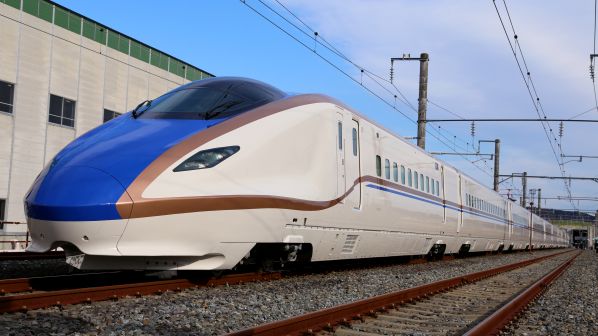TESTING of high-speed trains using automatic train operation (ATO) is underway in Japan with a media demonstration using a 12-car 260km/h E7-series train on the Joetsu Shinkansen line held on November 17.
East Japan Railway (JR East) conducted the latest test, which involved a train running autonomously for around 5km from Niigata station, north west of Tokyo, and reaching almost 110km/h on its short journey to Niigata Shinkansen depot. There was a driver onboard in case of any problems.
Newspaper reports suggest the train missed its stopping point by 8cm but was within the allowable margin of 50cm.
This was the first time a train used in commercial service had conducted one of these tests, which began in late October. Local 5G services are also being tested and these send high-quality video footage from trains to control centres in real-time. JR East successfully tested 5G communications at 360km/h at the end of 2020.
In July 2018, following the publication of the JR East Group management vision Move Up 2027, the company forecast a decline in operating income of Yen 8bn ($US 69.7m) in 2023 compared with 2019. The company states that the railway is labour-intensive and that it wishes to use a variety of technologies for work undertaken by people. This included track monitoring and driverless operation. The vision said that over the following five to 10 years JR East wanted to use the new technologies to increase the flexibility of operating expenses.
Reports in Japan suggest there is no timeframe for when Shinkansen trains will begin using ATO in passenger service.
For in-depth date on high-speed projects across Asia, subscribe to IRJ Pro.

